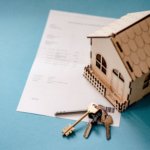October 31, 2025
Understanding Easements and Maintenance Obligations: What GTA Property Owners Should Know
When you own land or prepare to purchase property in the GTA, easements are a legal concern that shouldn’t be ignored. An easement grants a party the right to use another person’s land for a defined purpose such as a driveway, utility line or access route but with those rights come important maintenance responsibilities. Homeowners in the GTA often find that dealing with easements involves more than just acknowledging their existence. For guidance on easement issues during property purchase or sale, securing experienced real estate legal services from a qualified real estate lawyer in Toronto, Mississauga or Oakville is key.
What is an Easement?
In Ontario real estate, an easement is a non‑possessory interest allowing one party (the dominant tenement) to use a portion of another’s land (the servient tenement) for a specific purpose. Common examples include rights of way, private driveways, utilities, and access corridors. In some cases the benefit attaches to the land itself (appurtenant easement), and in others it attaches to an individual or entity (in gross easement). Understanding the distinction is vital when you are buying land or conducting a title search. For instance, utility easements in many properties across Mississauga are registered agreements that permit city staff or service providers to access portions of the land for inspection or repair.
Why Maintenance Matters
Even after an easement is legally created, maintenance obligations can become a point of dispute. Without clear language assigning duty in the easement document, questions arise: who is responsible for keeping the easement lands in good condition? Are repairs or upkeep expected? For property owners in Brampton, Richmond Hill, Scarborough and Vaughan, clarity is essential. Guidance from a conveyancing lawyer or property lawyer for home purchase helps protect your interests whether you are the dominant tenement holder or the landowner subject to the easement.
Roles and Responsibilities
A typical scenario in Ontario is that the dominant tenement is responsible for maintaining the path or access road granted by the easement, while the servient tenement must not interfere with the easement’s use. For example, in a right‑of‑way where the dominant homeowner uses the lane, that homeowner would likely repair the surface and ensure safe use. Meanwhile, the landowner granting the lane must keep vegetation trimmed, avoid constructing fences or obstacles and remain open to the easement’s use. Utility easements tell a slightly different story: typically, the utility company holds responsibility for the infrastructure, while the private landowner must ensure the area remains accessible and unobstructed.
Factors That Determine Maintenance Obligations
1. The Easement Agreement
The primary place to look is the easement deed or registered instrument itself. If the document clearly states who must maintain the easement corridor, that language governs. When this is ambiguous, uncertainties arise often requiring legal interpretation.
2. Type and Purpose of the Easement
The nature of the easement plays a significant role. For a shared driveway (access easement), frequent use means that maintenance realistically falls on the user. In contrast, utility easements often involve the servient landowner pledging not to block access, while the utility company retains upkeep duties. Even conservation easements, which preserve certain lands for environmental or heritage purposes, may impose obligations on the landowner to maintain the land in its natural state.
3. Ontario Legislation and Case Law
Under Ontario’s Land Titles Act (and older Registry Act titles), registering the easement gives notice to future property owners. Case law has reiterated that, in absence of a clear maintenance clause, neither party may be legally obligated beyond simply not interfering. One recent decision explained that a “repair right” in an easement did not create a full obligation to repair. Therefore, many property disputes pivot on whether duties were clearly laid out in the original document.
What Happens If a Dispute Arises?
Disagreements related to easement maintenance often stem from unclear agreements or shifting property ownership. When conflicts develop, common outcomes include negotiation, mediation or court action. Property transaction lawyers, such as those offering legal support for home purchase or sale in Oakville, Mississauga or Toronto, guide their clients through resolution strategies whether drafting a maintenance cost‑sharing agreement between neighbours or enforcing rights through legal proceedings.
When the easement agreement is silent, creating a written side‑agreement that specifies maintenance responsibilities and cost‑sharing arrangements is a smart precaution. Property lawyers for real estate contracts often recommend documenting who ploughs snow on a shared lane, who fills potholes on a private driveway or how tree trimming will be handled.
Practical Tips for GTA Homeowners
Conducting Due Diligence
Before purchasing any property in North York, Scarborough, or Brampton, a comprehensive title search led by a real estate lawyer ensures easements (both registered and unregistered) are identified. For example, utility companies maintain their own search portals for unregistered easements in Ontario.
Review Existing Easement Documents
Ensure the easement instrument spells out maintenance duties. If it doesn’t, negotiate a supplementary agreement with neighbours. Clear definitions for upkeep, repair, snow removal and cost‑sharing reduce future friction.
Build a Maintenance Plan
Even when your document is silent, prepare for practical upkeep. For example, if you benefit from an easement, set aside a budget for paved resurfacing or drainage improvement. If you’re the landowner granting the right, keep the area free from obstructions and monitor access.
Seek Legal Advice Early
If you’re unsure whether you’re responsible for maintenance or if you’re inheriting a property with an easement retain a real estate lawyer in Vaughan, Toronto or Oakville. Early advice can prevent costly litigation, protect your property rights and clarify ongoing obligations.
Why Local Expertise Matters
Service areas such as Toronto, Mississauga, Brampton, North York, Scarborough, Vaughan, Richmond Hill and Oakville each have unique considerations local zoning bylaws, municipal planning restrictions, historic easements, or differing property survey traditions. An experienced real estate lawyer in Toronto or a real estate lawyer in Mississauga understands these subtleties and can incorporate them into conveyancing reviews, property transfer processes and closing procedures.
Furthermore, legal services for home buyers, sellers and refinancers benefit from a team that is well‑versed in easements, title searches and land registry documentation. Whether you are buying a detached house, condo or commercial strata lot, a property transaction lawyer ensures easement issues are discovered and addressed before they derail your deal.
Conclusion
Easements may seem like minor technicalities, but they carry meaningful implications for property use, value and risk especially when it comes to maintenance obligations. Whether you are the beneficiary of an easement or the landowner whose properties are subject to one, understanding your rights and responsibilities is essential.
For anyone buying or selling property in the GTA, engaging a real estate lawyer in Toronto, Mississauga, Brampton, North York, Scarborough, Vaughan, Richmond Hill or Oakville provides the clarity and representation you need. With the right legal counsel, you’ll navigate easement complexities, ensure proper documentation, and protect your investment with confidence.
When easements become part of your property’s story don’t let surprise obligations become your problem. Reach out for legal assistance today and move forward with peace of mind.









